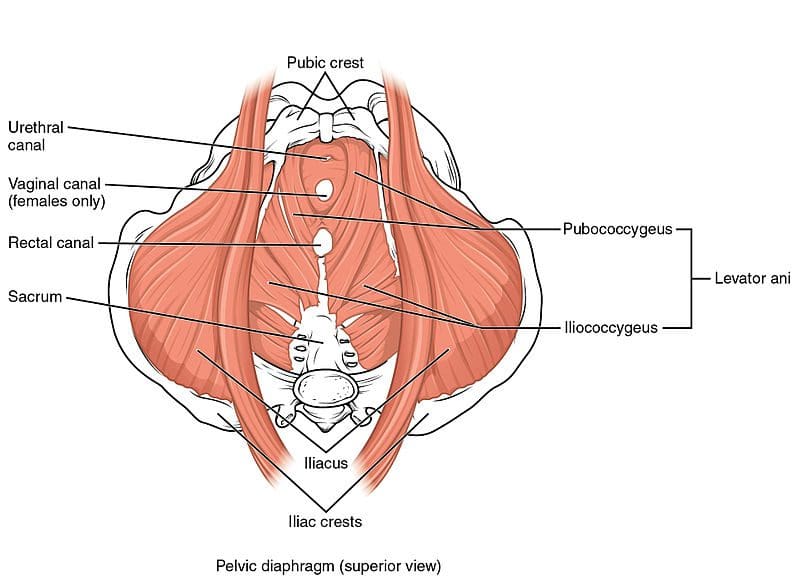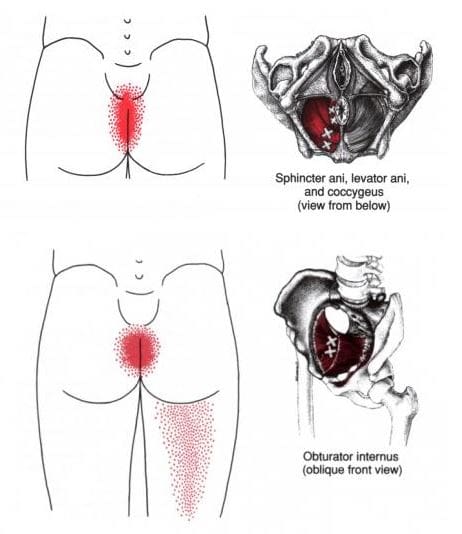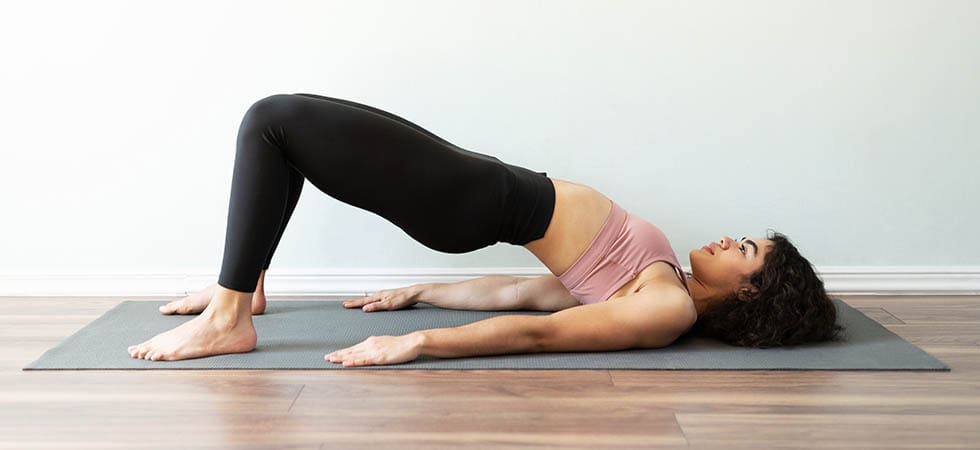Table of Contents
Introduction
The body’s pelvic region has many functions crucial for functionality with the host. The various muscles surrounding the pelvis help provide stability to the body’s core, allow circulation to the heart in the cardiovascular system, support the reproductive and abdominal organs, and much more the body requires. The pelvic joints’ various muscles also allow hip mobility and function for the lower body extremities. When traumatic injuries or abnormal activities start to affect the pelvic floor muscles, the various issues can affect the functionality of the pelvic region and cause problems in bladder control for both the male and female bodies. Many of these issues correlate with trigger points surrounding or on the pelvic floor muscles that can affect how the vital organs operate in the body. Today’s article examines the pelvic floor muscles, how trigger points correlate with pelvic pain, and managing pelvic pain is associated with trigger points. We refer patients to certified providers who incorporate multiple techniques in the lower body extremities, like pelvic pain treatments related to trigger points, to aid individuals dealing with pain symptoms along the pelvic floor muscles near and surrounding the pelvis. We encourage and appreciate patients by referring them to our associated medical providers based on their diagnosis, especially when it is appropriate. We understand that education is an excellent solution to asking our providers complex questions at the patient’s request. Dr. Jimenez, D.C., utilizes this information as an educational service only. Disclaimer
What Are The Pelvic Floor Muscles?

Have you been experiencing bladder issues that constantly make you go to the bathroom? Have you been dealing with severe cramps that mimic sciatica pain? Or does it hurt when you are sitting down? Many of these issues correlate with muscle pain associated with trigger point pain along the pelvic floor muscles. The pelvic floor muscles are a unique anatomical body location with a balance of different pressures (visceral, muscular, or liquid) that play a fundamental role in the body’s lower extremities. The pelvic floor muscles have four divided compartments but have different parts and functions to allow optimal bodily function. The four pelvic floor compartments include:
- Anterior or urinary (bladder)
- Medium or genital (uterus in women, prostate in men)
- Posterior or anterior (anus, anal cavity, and rectum)
- Peritoneal (endopelvic fascia and perineal membrane)
Some of the functions that the pelvic floor muscles allow the body to perform properly include proper contraction for sexual function, allowing respiration in the abdominal organs, maintaining bodily fluid actions like going to the restroom, and maintaining good posture by working together with the thoracolumbar and lumbosacral columns of the spine. Studies reveal that the spine’s autonomic nerves, which include the sympathetic and parasympathetic, help supply the posterior and anterior compartments in the pelvic floor. When traumatic factors affect the pelvic floor muscles, it can lead to correlating issues regarding trigger points in the pelvic muscles.
How Do Trigger Points Correlate With Pelvic Pain?
The pelvic floor has four different components to allow the muscles to function properly when traumatic factors start to invoke pain-like symptoms that can affect pelvic functionality in both the male and female body, thus developing trigger point pain associated with pelvic pain. For the female body, trigger points along the bulbospongiosus muscle (part of the pelvic floor muscles) may cause aching pain in the perineal region. In contrast, in the male body, trigger points along the retroscrotal area may cause discomfort while sitting erect. According to the book, “Myofascial Pain and Dysfunction,” written by Dr. Janet G. Travell, M.D., stated that many individuals that are dealing with trigger point pain along their pelvic floor muscles would often complain about feeling localized aching pain in their anal region and may experience painful bowel movements when going to the bathroom.

Studies reveal that myofascial trigger points develop “muscle contraction knots” of the pelvic floor muscles, may be identified in many patients suffering from pelvic pain syndrome (urological, colorectal, and gynecological), and are associated with trigger points. Trigger points are tricky when diagnosing where the pain is located since myofascial pain syndrome mimics other chronic conditions of the surrounding muscles, causing referred pain. Additional studies reveal that the location and severity of pelvic floor myofascial pain was significantly correlated with various pelvic pain symptoms that can affect both males and females with different conditions. When doctors recognize that their patients are dealing with trigger points associated with pelvic pain after an examination, they devise a treatment plan and work with other specialists to manage trigger points and reduce pain in the pelvic region.
Top 3 Pelvic Floor Exercises- Video
Have you been dealing with urinary issues that make it tricky to go to the bathroom? Do you have trouble finding a comfortable position when you are sitting down? Or do you feel pain radiating down your buttock and leg? Pelvic pain is a common issue that can affect both men and women that can cause various pain symptoms that correlate with trigger points along the pelvic floor muscles. When trigger points affect the pelvic floor muscles, it can lead to referred pain that connects with pelvic pain in the body’s lower extremities. Many factors can affect the pelvis, like issues affecting the digestive, reproductive, or urinary systems, a trauma in the surrounding pelvic muscles that causes them to be weak or corresponding issues on the hips and lower back. Trigger points associated with pelvic pain may be tricky. Still, they can be treatable with different therapies that can reduce the pain and help strengthen those weak muscles in the pelvic region. The video above demonstrates three other pelvic floor exercises that can help support the pelvic muscles and reduce the trigger points from reoccurring in the pelvic area of the lower body.
Managing Pelvic Pain Associated With Trigger Points

Various treatments can manage pain associated with trigger points through multiple therapies that can reduce pain-like symptoms along the pelvic floor muscles. Many therapies, like trigger point therapy and muscle training, can help reduce the pain along the pelvic floor muscles and bring back bowel function to the pelvic region. Studies reveal that doctors provide a range of protocols designed to strengthen the pelvic floor muscles and the different muscle groups around the pelvic area while improving function. However, treatment alone can only go so far, as people must take corrective actions to ensure that the trigger points do not return in the future. Movements like corrective posture exercises focusing on the lower back, hips, and pelvis and eating a fiber-rich diet can reduce pelvic pain. This allows the individual to get their lower half mobility back.
Conclusion
The pelvic floor muscle has four divided components that will enable optimal bodily function that has different jobs in the male and female bodies. The pelvic floor muscles have many crucial functions that provide the host stability in the body’s core, allow circulation to the cardiovascular system, and, most importantly, support the reproductive and abdominal organs. When issues affect the pelvic floor muscles, it can lead to pelvic pain associated with trigger points that can disrupt many from going to the bathroom or disrupting sexual functionality. All is not lost, as various therapies can reduce the pain and strengthen the pelvic muscles in the lower body. This allows lower body mobility back to the host and prevents unnecessary issues from reoccurring.
References
Bordoni, Bruno, et al. “Anatomy, Abdomen and Pelvis, Pelvic Floor.” In: StatPearls [Internet]. Treasure Island (FL), StatPearls Publishing, 18 July 2022, https://www.ncbi.nlm.nih.gov/books/NBK482200/.
Marques, Andrea, et al. “The Status of Pelvic Floor Muscle Training for Women.” Canadian Urological Association Journal = Journal De L’Association Des Urologues Du Canada, Canadian Medical Association, Dec. 2010, https://www.ncbi.nlm.nih.gov/pmc/articles/PMC2997838/.
Meister, Melanie R, et al. “Pelvic Floor Myofascial Pain Severity and Pelvic Floor Disorder Symptom Bother: Is There a Correlation?” American Journal of Obstetrics and Gynecology, U.S. National Library of Medicine, Sept. 2019, https://www.ncbi.nlm.nih.gov/pmc/articles/PMC6732028/.
Moldwin, Robert M, and Jennifer Yonaitis Fariello. “Myofascial Trigger Points of the Pelvic Floor: Associations with Urological Pain Syndromes and Treatment Strategies Including Injection Therapy.” Current Urology Reports, U.S. National Library of Medicine, Oct. 2013, https://pubmed.ncbi.nlm.nih.gov/23943509/.
Raizada, Varuna, and Ravinder K Mittal. “Pelvic Floor Anatomy and Applied Physiology.” Gastroenterology Clinics of North America, U.S. National Library of Medicine, Sept. 2008, https://www.ncbi.nlm.nih.gov/pmc/articles/PMC2617789/.
Travell, J. G., et al. Myofascial Pain and Dysfunction: The Trigger Point Manual: Vol. 2:the Lower Extremities. Williams & Wilkins, 1999.
Disclaimer
Post Disclaimer
Professional Scope of Practice *
The information on this blog site is not intended to replace a one-on-one relationship with a qualified healthcare professional or licensed physician and is not medical advice. We encourage you to make healthcare decisions based on your research and partnership with a qualified healthcare professional.
Blog Information & Scope Discussions
Welcome to El Paso's Premier Wellness and Injury Care Clinic & Wellness Blog, where Dr. Alex Jimenez, DC, FNP-C, a board-certified Family Practice Nurse Practitioner (FNP-BC) and Chiropractor (DC), presents insights on how our team is dedicated to holistic healing and personalized care. Our practice aligns with evidence-based treatment protocols inspired by integrative medicine principles, similar to those found on this site and our family practice-based chiromed.com site, focusing on restoring health naturally for patients of all ages.
Our areas of chiropractic practice include Wellness & Nutrition, Chronic Pain, Personal Injury, Auto Accident Care, Work Injuries, Back Injury, Low Back Pain, Neck Pain, Migraine Headaches, Sports Injuries, Severe Sciatica, Scoliosis, Complex Herniated Discs, Fibromyalgia, Chronic Pain, Complex Injuries, Stress Management, Functional Medicine Treatments, and in-scope care protocols.
Our information scope is limited to chiropractic, musculoskeletal, physical medicine, wellness, contributing etiological viscerosomatic disturbances within clinical presentations, associated somato-visceral reflex clinical dynamics, subluxation complexes, sensitive health issues, and functional medicine articles, topics, and discussions.
We provide and present clinical collaboration with specialists from various disciplines. Each specialist is governed by their professional scope of practice and their jurisdiction of licensure. We use functional health & wellness protocols to treat and support care for the injuries or disorders of the musculoskeletal system.
Our videos, posts, topics, subjects, and insights cover clinical matters and issues that relate to and directly or indirectly support our clinical scope of practice.*
Our office has made a reasonable effort to provide supportive citations and has identified relevant research studies that support our posts. We provide copies of supporting research studies available to regulatory boards and the public upon request.
We understand that we cover matters that require an additional explanation of how they may assist in a particular care plan or treatment protocol; therefore, to discuss the subject matter above further, please feel free to ask Dr. Alex Jimenez, DC, APRN, FNP-BC, or contact us at 915-850-0900.
We are here to help you and your family.
Blessings
Dr. Alex Jimenez DC, MSACP, APRN, FNP-BC*, CCST, IFMCP, CFMP, ATN
email: coach@elpasofunctionalmedicine.com
Licensed as a Doctor of Chiropractic (DC) in Texas & New Mexico*
Texas DC License # TX5807
New Mexico DC License # NM-DC2182
Licensed as a Registered Nurse (RN*) in Texas & Multistate
Texas RN License # 1191402
ANCC FNP-BC: Board Certified Nurse Practitioner*
Compact Status: Multi-State License: Authorized to Practice in 40 States*
Graduate with Honors: ICHS: MSN-FNP (Family Nurse Practitioner Program)
Degree Granted. Master's in Family Practice MSN Diploma (Cum Laude)
Dr. Alex Jimenez, DC, APRN, FNP-BC*, CFMP, IFMCP, ATN, CCST
My Digital Business Card


